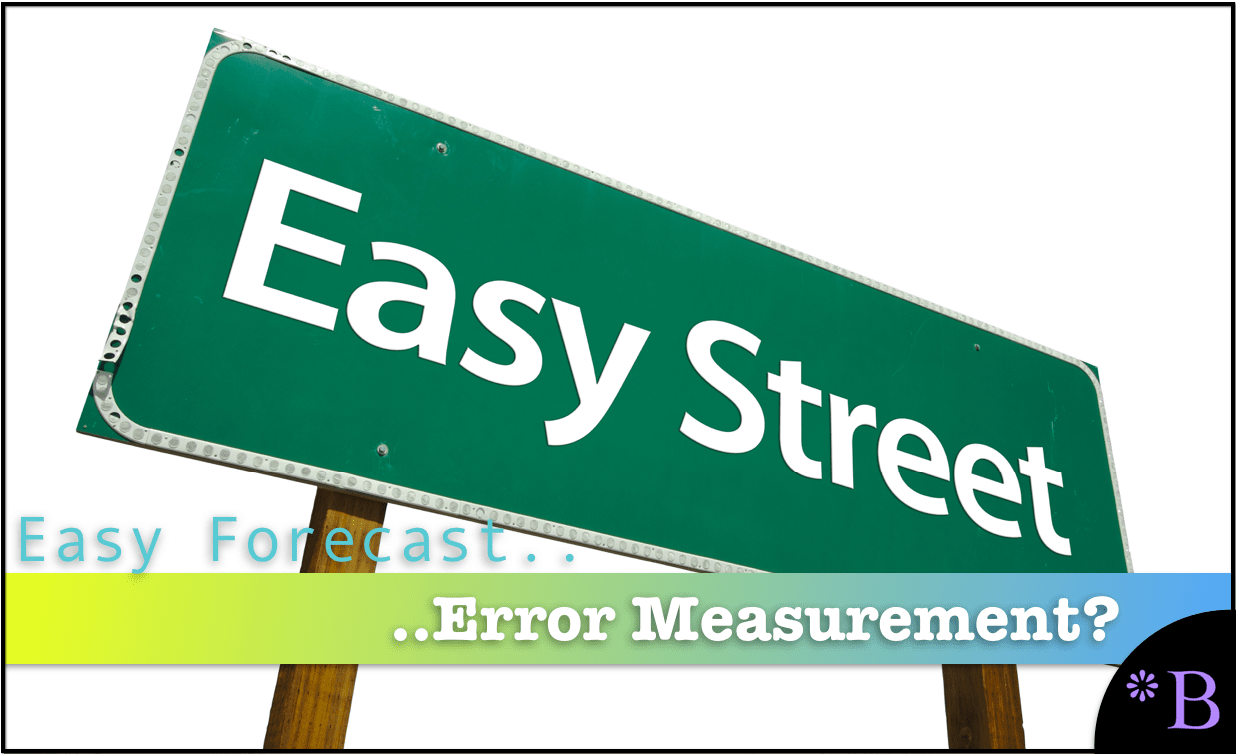How MAE is Calculated for Forecast Error Measurement
Executive Summary
- MAE is a universally accepted forecast error measurement.
- MAE is generally low in effectiveness in providing feedback to improve the forecast.

Introduction
MAE, or Mean Absolute Error, is easy to understand and calculate. It is also proportional. MAE is a universally accepted forecast error measurement; even still, MAE is generally moderate ineffectiveness in providing feedback to improve the forecast. The MAE calculation must be weighed to view the actual forecast error concerning the overall forecast database. You will learn about MAE calculation different ways of calculating MAE, and broader implications for forecast improvement using the MAE.
Our References for This Article
If you want to see our references for this article and related Brightwork articles, see this link.
MAE, or Mean Absolute Error, is one of the more common forecast error measurements in use. It is moderately easy to understand and easy to calculate.
However, along with these benefits, it also has several downsides.
How MAE is Calculated
How MAE is calculated is as follows.
- Take the Absolute Value of (Subtract the forecast from the actuals)
- Average the absolute error of the product location combinations
The formula is..
= Average(ABS(F – A))
Benefits of MAE
- MAE is proportional
- MAE is easy to calculate
Limitations of MAE
- MAE does not provide a product location error but is an average of a group of product locations. The AE or Average Error would be just the product locations.
- MAE shows the most accurate forecasts but does not tell a demand planner where to focus. As with most forecast error measurements, there is a notable lack of context.
The Same Problem With All the Standard Forecast Error Measurements
MAE was never a forecast error method we used before developing our own.
These include the following:
- They are difficult to weigh. Any forecast error aggregated beyond the product location combination must be weighed to make any sense.
- They make comparisons between different forecasting methods overly complicated.
- They lack the context of the volume of the demand history or the price of the forecasted product, meaning that the forecast errors must be provided with context through another formula.
- They are difficult to explain, making them less intuitive than a different approach.
How MAE is calculated is good, but it is not the forecast error we recommend.
Why Do the Standard Forecast Error Calculations Make Forecast Improvement So Complicated and Difficult?
It is important to understand forecasting error, but the problem is that the standard forecast error calculation methods do not provide this good understanding. In part, they don't let tell companies that forecast how to make improvements. If the standard forecast measurement calculations did, it would be far more straightforward and companies would have a far easier time performing forecast error measurement calculation.
What the Forecast Error Calculation and System Should Be Able to Do
One would be able to for example:
- Measure forecast error
- Compare forecast error (For all the forecasts at the company)
- To sort the product location combinations based on which product locations lost or gained forecast accuracy from other forecasts.
- To be able to measure any forecast against the baseline statistical forecast.
- To weigh the forecast error (so progress for the overall product database can be tracked)
 Getting to a Better Forecast Error Measurement Capability
Getting to a Better Forecast Error Measurement Capability
A primary reason these things can not be accomplished with the standard forecast error measurements is that they are unnecessarily complicated, and forecasting applications that companies buy are focused on generating forecasts, not on measuring forecast error outside of one product location combination at a time. After observing ineffective and non-comparative forecast error measurements at so many companies, we developed, in part, a purpose-built forecast error application called the Brightwork Explorer to meet these requirements.
Few companies will ever use our Brightwork Explorer or have us use it for them. However, the lessons from the approach followed in requirements development for forecast error measurement are important for anyone who wants to improve forecast accuracy.